By Kristina Seleshanko
One day, as I walked past an apple tree that was naturally thinning its fruit by dropping tiny, baby apples, I thought, “I wish there was something useful I could do with these.” This uniquely homesteader-like thought kept nagging me until one day, while browsing the Internet, I bumped into the perfect thing to do with those tiny apples: Make pectin.
Pectin is best known as a jam and jelly-making ingredient, although there are a number of other uses for pectin. In jelly and jam making, homemade pectin allows you to use less sugar than if you used standard store-bought pectin. Plus, if you can make your own, you’re that much less dependent upon store-bought. Additionally, making your own pectin is virtually free. Depending upon your point of view, using homemade pectin also makes the jam- or jelly-creation process more fun: You have better control over the process and can truly experiment with the fruit.
What is pectin?
Pectin is a complex carbohydrate and soluble dietary fiber naturally occurring in the walls of plant cells. Pectin is found in all fruit — but some fruits have more pectin than others. Underripe fruit, for example, has more pectin than well-ripened fruit, and apples, quince, and citrus are among the fruits naturally containing more pectin than pears, strawberries, or blueberries.
When it comes to canning, pectin is a thickener; it’s what makes the difference between your concoction ending up a runny syrup or a thick jelly. However, pectin will only jell when it’s combined with sugar and brought to the correct temperature (221° F).
Commercially-sold pectin usually comes as a powder and requires large amounts of sugar to cause jam or jelly to coagulate. You can also buy liquid pectin, which should only be used in recipes specifically calling for it. (Powdered and liquid pectin aren’t interchangeable in recipes, and you will require a different amount of homemade pectin than you would commercially-made pectin.)
Store-bought pectin is usually made from citrus peels or apple pomace (a by-product of apple juice manufacturing). Homemade pectin is made from either apple peels and cores or from very sour or immature apples.
Why not use whole apples?
Some people simply add pieces of sour apples to their jam in order to thicken it, or feel that eating fresh apples and other high pectin fruit gives them enough pectin for their health concerns. Just note that homemade pectin offers more pectin in a smaller package than whole, fresh fruit does. If you do decide to rely on fresh apples, don’t peel them. Most of the pectin is in the peel.
Choosing apples
When it comes to making your own pectin, the more sour the apples, the better your pectin will be. This is why unripe apples are a great choice for making pectin, with crabapples coming in as a good second choice. When I first started making my own pectin, I was living in the suburbs and didn’t have my own apple trees. However, there were crabapple trees growing in public areas around town, so I picked the apples that fell from them in the early summer — and neighbors thanked me for preventing what would have become a big mess of rotting apples on the sidewalk. Today, I use the unripe apples from our orchard, but you could just as easily forage wild crabapples, too.
It’s fine to acquire apples for pectin-making a little at a time. Just rinse off the apples, pat them dry, drop them into a freezer bag, and put them in the freezer until you’re ready to use them. Approximately 8 pint-sized freezer bags of baby apples makes 19 jelly jars of pectin. However, the smaller and more immature your apples are, the less pectin you’ll make.
How to make apple pectin
1. Rinse off the apples, if you haven’t already, and cut each one in half, tossing the pieces into a large pot. (If using mature sour apples, quarter them.)
2. When all the apples are halved, or your pot is ¾ full, cover the apples with water until the fruit on top is floating.
3. Bring to a boil over high heat. Reduce the heat and simmer for at least two hours. Keep an eye on the pot, and if needed, add additional water so the top apples continue to float.
4. When the apples turn a brownish, rose-tinted color and the liquid in the pot is a rosy brown, turn off the heat.
5. Place a colander over a large heat-proof bowl. Line the colander with a flour sack dish towel. (Use an old towel because the apples will stain the cloth.) Pour the cooked apples and their liquid through the colander. Cover the colander with another towel and place in the refrigerator, allowing the apples to drain overnight. Don’t press down on the apples to remove moisture; let the apples drain naturally.
6. The next day, throw the cooked apples into your compost pile.
7. Pour the remaining liquid into a large, clean pot. Bring to a boil over medium high heat. Reduce the heat and allow to simmer for at least 20 minutes.
8. To see if the pectin is ready, put a tablespoon of it in a small bowl and set it in the refrigerator to cool. In another small bowl, pour about a teaspoon of rubbing alcohol.
9. When the bowl of pectin is completely cool, pour the pectin into the bowl with the rubbing alcohol. With a fork, try to lift the pectin. If the pectin is too runny to pick up with a fork, it’s not yet ready and needs to continue simmering. If the pectin is coagulated, it’s done. Discard the pectin-alcohol mixture.
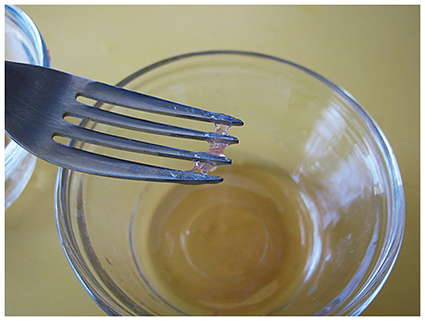
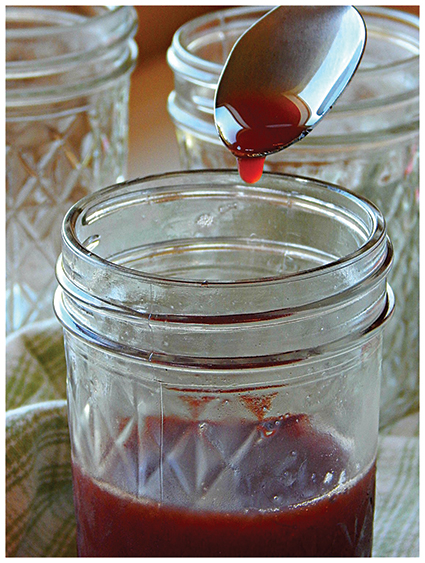
Preserving homemade pectin
Apple pectin can be frozen or made shelf-stable through canning. To freeze homemade apple pectin, let it cool completely, then spoon into freezer-safe containers and place in the freezer. For ease of use, you might want to freeze the pectin in an ice cube tray; once fully frozen, remove the cubes and throw into a larger container to store in the freezer. For best results, use frozen pectin within a year.
To can homemade apple pectin, ladle the hot pectin into clean, hot jars, leaving ½-inch headspace. Process in a water bath canner for 10 minutes.
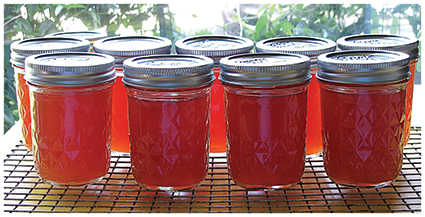
Use homemade apple pectin for jam and jelly making
Whether you use fruit that’s naturally high in pectin, or you add homemade pectin to some lower pectin fruits, you’ll need to experiment a bit to get a well jelled jam or jelly. Each batch of pectin you make may be stronger or weaker than another batch, especially if you’re using different types or ages of apples in those batches.
For every cup of low pectin fruit, you might be able to use as little as 4 tablespoons of homemade pectin. Other times, you may need to use as much as a cup of homemade pectin. A decent rule of thumb is to use ¼ cup of homemade apple pectin per cup of fruit.
In addition, you will require less sugar in your jam than you might be used to, so begin with a small amount, and taste as you cook until you have the correct level of sweetness.
To make jam with homemade pectin, place the fruit in a heavy pot. Add about 1 cup sugar to start. Place over medium heat and stir until the sugar is well incorporated. Stir often as the fruit begins to release its juices. Taste and add more sugar, as desired. Stir in homemade pectin and bring to 221° F.
To make jelly with homemade pectin, place fruit juice in a heavy pot, and follow the same procedure as for jam making.
Test your jam or jelly to ensure it has enough pectin. Before you start cooking, place several saucers in the freezer. Once the jelly or jam reaches the proper temperature, remove a saucer from the freezer and place a spoonful of your concoction in the center. Give the jam a few minutes to cool, then swipe your finger through it. If the jam or jelly is ready, it will wrinkle a little and won’t come flooding back into the gap your finger made.
Once your jelly or jam seems set, you may either refrigerate it and use it within a couple of months, freeze it, or process the hot mixture in jelly jars in a water bath canner for 10 minutes.
If your jelly or jam comes out hard and difficult to spread, you’ve overcooked it, used too much sugar, or used too much pectin.
If it’s runny, you’ve either not brought it to temperature, used too little sugar, or used too little pectin.
Remember, it can take up to two weeks for jam or jelly to fully jell.
Health benefits
I’m not a doctor and I can’t give you medical advice, but I can tell you what others have suggested regarding apple pectin and human health. Such experts advise patients to wait at least an hour between consuming pectin and taking any prescriptions or vitamins, since a high amount of fiber can limit absorption of medications. In addition, consuming pectin may reduce the effectiveness of some antibiotics.
Apple pectin might help fight cancer, according to several scientific studies. The University of Georgia found that apple pectin killed up to 40% of prostate cancer cells in a laboratory setting.
Pectin may also reduce “bad” cholesterol, according to the University of Wisconsin School of Medicine and Public Health. Their website states, “Pectin is a fiber that binds to bile acids (acids made in the liver from cholesterol).” It also binds to cholesterol, preventing its absorption. They cite a study that shows eating pectin-rich foods might decrease cholesterol by as much as 10%. For attempting to lower cholesterol, try consuming 15 grams of pectin per day.
As far as old-time treatments go, apple pectin has been used to treat diarrhea. If you have diarrhea, try consuming 10 to 20 grams of homemade apple pectin daily until symptoms reverse.
Some people swear by the use of apple pectin as a treatment for GERD and heartburn. Apple pectin can even be used topically to treat mouth sores, or swallowed for sore throats. To treat mouth sores, apply a small amount of apple pectin topically. For a sore throat, swallow a tablespoonful.
After the Chernobyl nuclear meltdown in 1986, Russian doctors gave apple pectin to children to help reduce the harmful effects of radiation. According to a study published in The Swiss Medical Weekly, the 5 grams of pectin these children consumed twice a day reduced the amount of radioactive Cesium in their bodies by 62%.
Remember that pectin is a type of fiber, so if consuming it causes digestive distress, stop eating it.










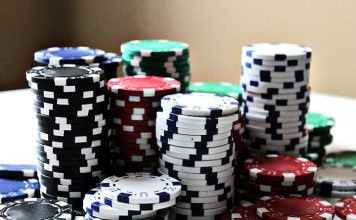

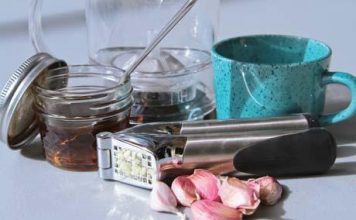
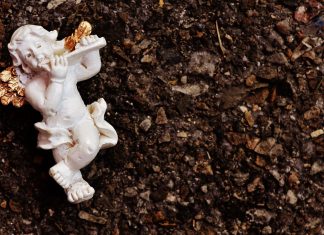
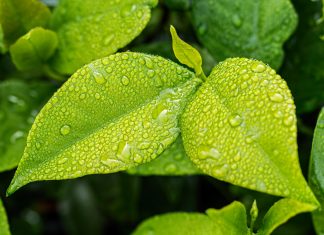
I will try your homemade pectin recipe. I have a few baskets of organic granny smith apples from my tree and have a recipe that calls for apple pectin. I found it hard to find and don’t like the idea of having to use so much sugar. My goal is to make french fruit jellies.